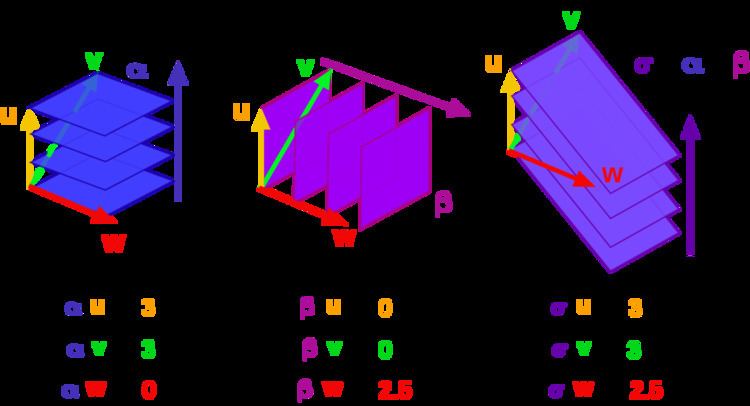 | ||
In linear algebra, a one-form on a vector space is the same as a linear functional on the space. The usage of one-form in this context usually distinguishes the one-forms from higher-degree multilinear functionals on the space. For details, see linear functional.
Contents
In differential geometry, a one-form on a differentiable manifold is a smooth section of the cotangent bundle. Equivalently, a one-form on a manifold M is a smooth mapping of the total space of the tangent bundle of M to
where αx is linear.
Often one-forms are described locally, particularly in local coordinates. In a local coordinate system, a one-form is a linear combination of the differentials of the coordinates:
where the fi are smooth functions. From this perspective, a one-form has a covariant transformation law on passing from one coordinate system to another. Thus a one-form is an order 1 covariant tensor field.
Linear
Many real-world concepts can be described as one-forms:
Differential
The most basic non-trivial differential one-form is the "change in angle" form
While the angle "function" cannot be continuously defined – the function atan2 is discontinuous along the negative y-axis – which reflects the fact that angle cannot be continuously defined, this derivative is continuously defined except at the origin, reflecting the fact that infinitesimal (and indeed local) changes in angle can be defined everywhere except the origin. Integrating this derivative along a path gives the total change in angle over the path, and integrating over a closed loop gives the winding number.
In the language of differential geometry, this derivative is a one-form, and it is closed (its derivative is zero) but not exact (it is not the derivative of a 0-form, i.e., a function), and in fact it generates the first de Rham cohomology of the punctured plane. This is the most basic example of such a form, and it is fundamental in differential geometry.
Let
In terms of the de Rham complex, one has an assignment from zero-forms (scalar functions) to one-forms i.e.,
